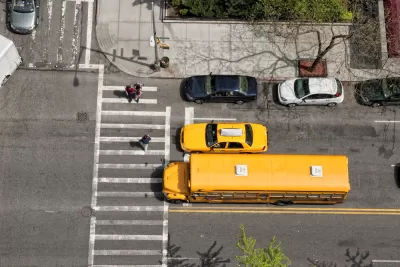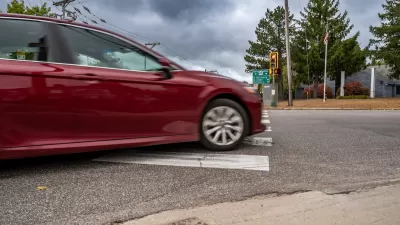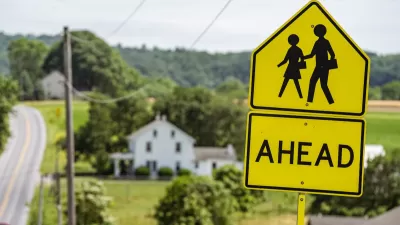In a radical shift from prior policy that singled out passenger safety, new cars could be required to include more features that protect people outside the vehicle.

New cars could soon be required to include more safety features as the National Highway Traffic Safety Administration (NHTSA) seeks ways to combat a rising number of pedestrian deaths, reports Andrew J. Hawkins.
For the first time, NHTSA will consider the inclusion of advanced driver-assistance system (ADAS — sorry for all the acronyms!) features, like automatic emergency braking, blind-spot detection, and lane-keep assistance. These ADAS features, which are quickly becoming standard in most vehicles today, could become essential criteria for a five-star safety rating from the government.
This signals a shift from prior safety standards, which only assessed the safety of a car's occupants through crash tests, but failed to account for the safety of pedestrians or cyclists. "NHTSA acknowledges that this is no longer a tenable system," writes Hawkins. "For the first time ever, NCAP includes technology recommendations not only for drivers and passengers but for road users outside the vehicle, like pedestrians," according to a statement by Steven Cliff, deputy administrator at NHTSA.
"The idea is to rate automobile safety on a host of new technologies that can stop risky driving behavior before it even occurs. As a result, NCAP tests will become more stringent, and vehicles that don’t include these features are likely to receive a lower rating."
FULL STORY: The US government finally realizes that cars kill people outside the vehicle, too

Manufactured Crisis: Losing the Nation’s Largest Source of Unsubsidized Affordable Housing
Manufactured housing communities have long been an affordable housing option for millions of people living in the U.S., but that affordability is disappearing rapidly. How did we get here?

Americans May Be Stuck — But Why?
Americans are moving a lot less than they once did, and that is a problem. While Yoni Applebaum, in his highly-publicized article Stuck, gets the reasons badly wrong, it's still important to ask: why are we moving so much less than before?

Using Old Oil and Gas Wells for Green Energy Storage
Penn State researchers have found that repurposing abandoned oil and gas wells for geothermal-assisted compressed-air energy storage can boost efficiency, reduce environmental risks, and support clean energy and job transitions.

Updating LA’s Tree Rules Could Bring More Shade to Underserved Neighborhoods
A new USC study finds that relaxing Los Angeles’ outdated tree planting guidelines could significantly expand urban tree canopy and reduce shade disparities in lower-income neighborhoods, though infrastructure investments are also needed.

California's Canal Solar Projects Aim to Conserve Resources and Expand Clean Energy
California’s Project Nexus has begun generating electricity from solar panels installed over irrigation canals, with researchers and state agencies exploring statewide expansion to conserve water and boost clean energy production.

HHS Staff Cuts Gut Energy Assistance Program
The full staff of a federal program that distributes heating and cooling assistance for low-income families was laid off, jeopardizing the program’s operations.
Urban Design for Planners 1: Software Tools
This six-course series explores essential urban design concepts using open source software and equips planners with the tools they need to participate fully in the urban design process.
Planning for Universal Design
Learn the tools for implementing Universal Design in planning regulations.
Heyer Gruel & Associates PA
City of Moreno Valley
Institute for Housing and Urban Development Studies (IHS)
City of Grandview
Harvard GSD Executive Education
Salt Lake City
NYU Wagner Graduate School of Public Service
City of Cambridge, Maryland





























